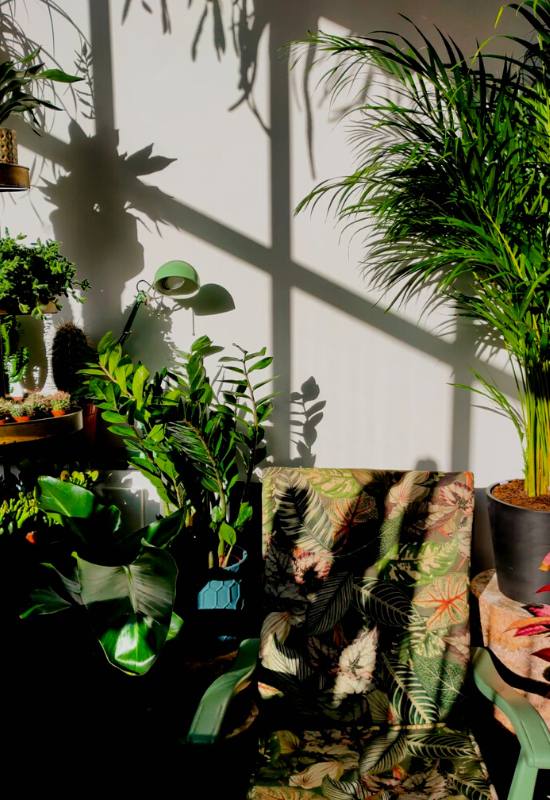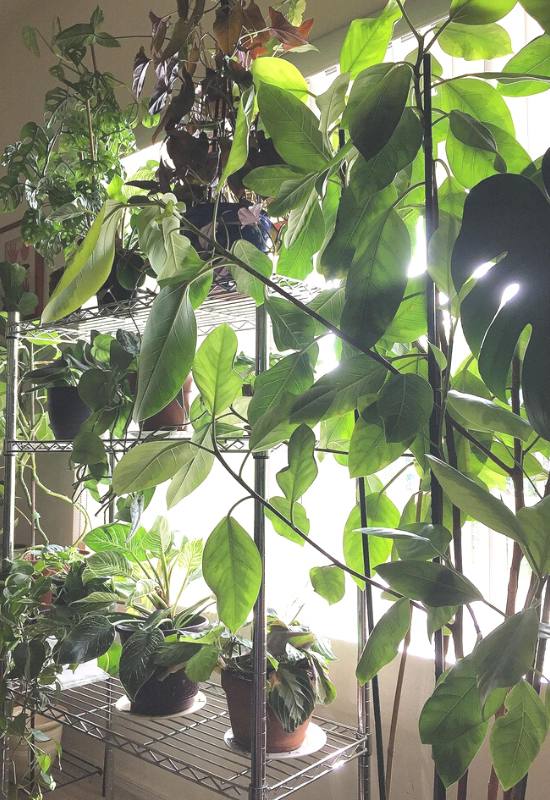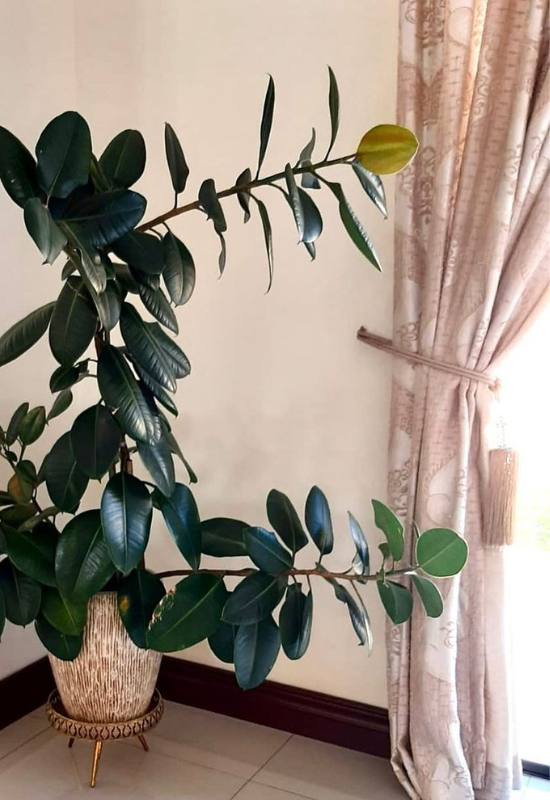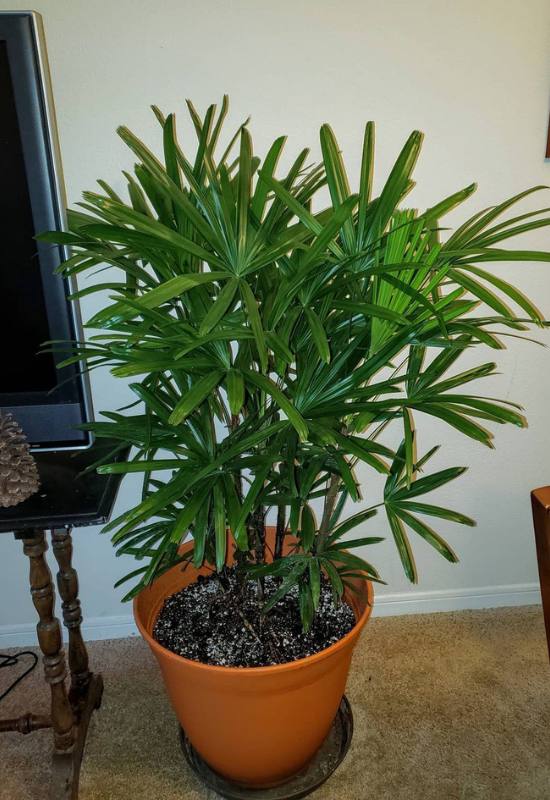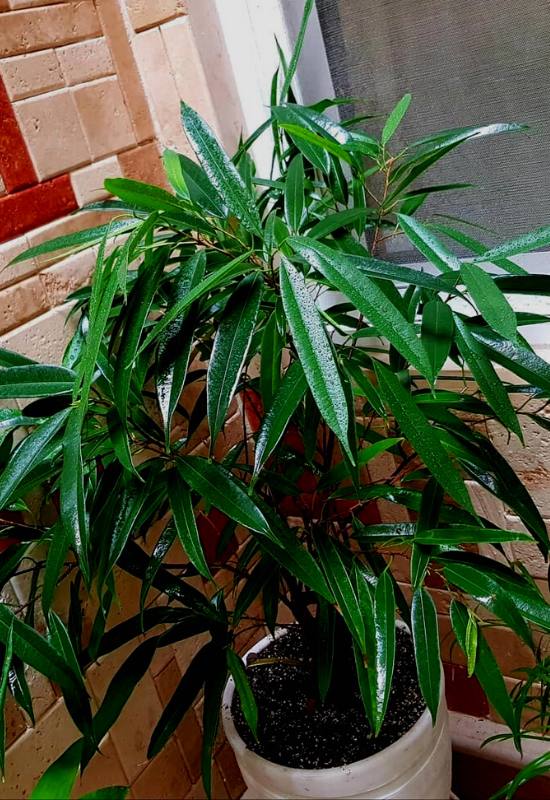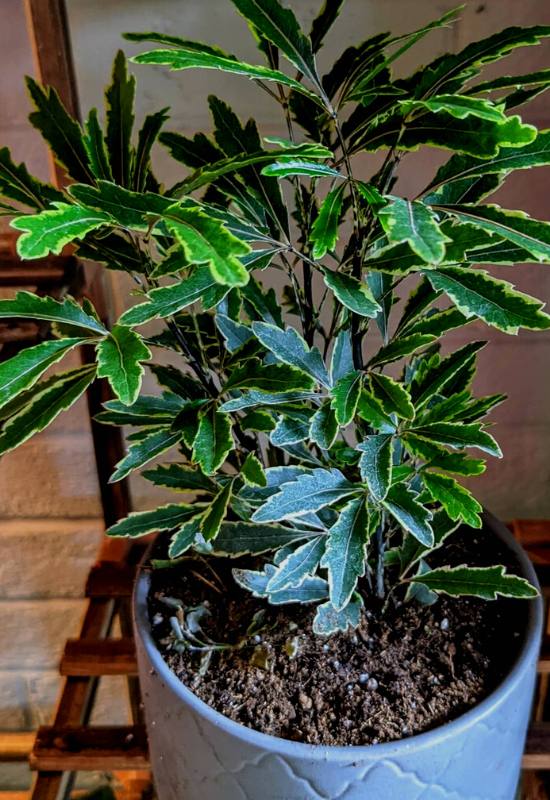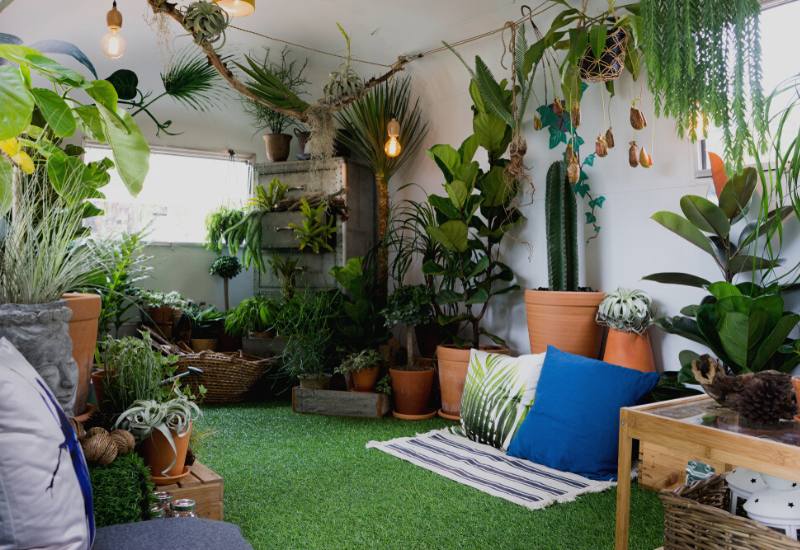
Small trees in rooms mean lush, even exotic foliage, color, a fresh atmosphere and even vibrant energy. But how about if there is little natural light where you want to grow them?
Yes, because poorly lit rooms can be problematic when it comes to growing houseplants, especially big ones, as shadowy corners of your home can hamper the growth of your plants, or even spell their deaths.
But this isn’t always true. Fortunately, some exotic and tropical tree varieties naturally grow in the shade of taller neighbors, and these will like medium, moderate and even a shady corner in low light far away from a window, or in a north facing room.
Actually, low-light indoor trees will lift it and brighten it up with their showy, decorative and beautiful leaves, and sometimes even flowers!
If you have a room or office with lots of shade, you should select a small tree which will not drop leaves, turn pale or yellow, and still survive, or even thrive if the lighting is less than ideal.
They are not many, but we found the best small trees for moderate and low light conditions in indoor spaces, and we are happy to show them all to you!
However, understanding what light conditions mean for houseplants is not that simple, so we can learn about this first. But don’t worry, you will soon get to know all these trees as well.
Understanding Light For House Plants
The way we describe light conditions indoors and outdoors differ a lot. It is easier to “measure” sunlight in the open air, we just use how many hours of bright light a plant can receive. In closed spaces, it becomes all a bit more complex, so, let’s try to cast a light on this topic…
To start with, by “low light” we usually mean moderate or low indirect light, or even medium.
Very few rooms have what we technically call “low light”, as you will soon see, because that’s a place which really means deep shade, or almost total darkness.
There are four different parameters you need to use to understand how much and what type of light you can offer your indoor trees or other houseplants: the direction of the window, the illuminance levels, the distance from the window, finally, if the light is direct or indirect (filtered).
It’s best to talk about each one separately. This way you will have a good knowledge of light conditions, but don’t worry; when we see the trees in detail, I will give you all the information you need for each.
Indoor Light and the Direction of the Window
Windows can face north, south, east or west, and this changes light conditions a lot. They can also face other points, like north-west etc., but it would be impractical to look at all these small differences.
Let’s see what each positioning offers.
Of course, if you live in the Southern Hemisphere, north and south are reversed.
How Much Light Your Plant Is Getting
We can literally measure light; and we do it calculating how much light falls either on a square foot (foot candles) or how much on a square meter (lux). This is called illuminance, but… Two points first…
I prefer using lux as a measure because it is what you find on grow lights.
If you don’t have grow lights, how can you use it, in practice? You could measure it with light meter or… You can check the shadows you see.
This is a practical way gardeners use, because the clearer and better defined the shadows, the stronger is the light!
But now let’s get technical…
Keep in mind that all you really need is a rough idea of the illuminance for an indoor tree or houseplant, the exact details are useful for specialists, growers, indoor farmers and botanical gardens…
Also, outdoor illuminance is much higher than indoors on average between 10,000 and 25,000 lux, and up to 60,000!
Indoor Trees and Houseplants – Distance from the Window
The further you put an indoor tree or houseplant from the window, the less strong the light will be. This also affects the heat levels it receives.
Few plants tolerate being just by a window; this usually burns them, because window panes can act as lenses.
Most houseplants need to be placed at least 5 feet away from a window (1.5 meters). Shade loving plants and trees need to stay further than that, in a corner on the opposite side of the window, and not directly in front of it, on the side.
Direct and Indirect (Filtered) Light Indoors
Whether the light is direct or indirect (filtered) depends on whether you have curtains, if there are any other obstacles to sunlight between the window and the houseplant or tree (like a table, other plants etc.) and whether you place it in direct line with the window or to the side.
Of course, our trees all love to have filtered light. So, if you don’t have one, get a thin curtain and hang it before you choose one of the beauties you are about to see!
10 Indoor Trees That Defy Darkness and Add Life to Dimly Lit Spaces!
There is a lot to say about indoor light conditions, as you have seen; but now it’s really time to meet the trees you can grow indoors in moderate or low light.
Here are the 10 best small tress and large houseplants that actually thrive in your home or office without the need for a lot of natural sunlight.
1: Rubber Plant (Ficus elastica)
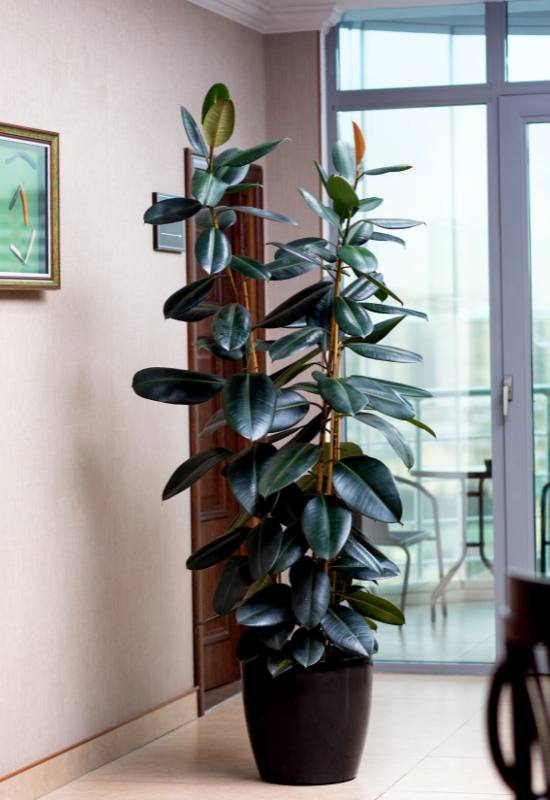
Rubber plant is a classic indoor tree grown as a houseplant of the Ficus genus that loves low light conditions. It has big, broad oval leaves, 4 to 14 inches long (10 to 35 cm) and 2 to 6 inches wide (5.0 to 15 cm).
They are fleshy and they have the texture of rubber, hence the name. Very shiny, these are dark green on the top and dark purple on the under page.
But when they appear as long buds, they are red before they unfurl, and copper when young. There are also variegated varieties like the cream and forest green ‘Tineke’, or ‘Belize’ with a lovely pink glow.
Strong sunlight will burn and ruin the leaves of rubber plant, which makes it perfect for shady corners, where it will bring its own light and exotic beauty.
2: Yellow Cane Palm (Dypsis Lutescens)
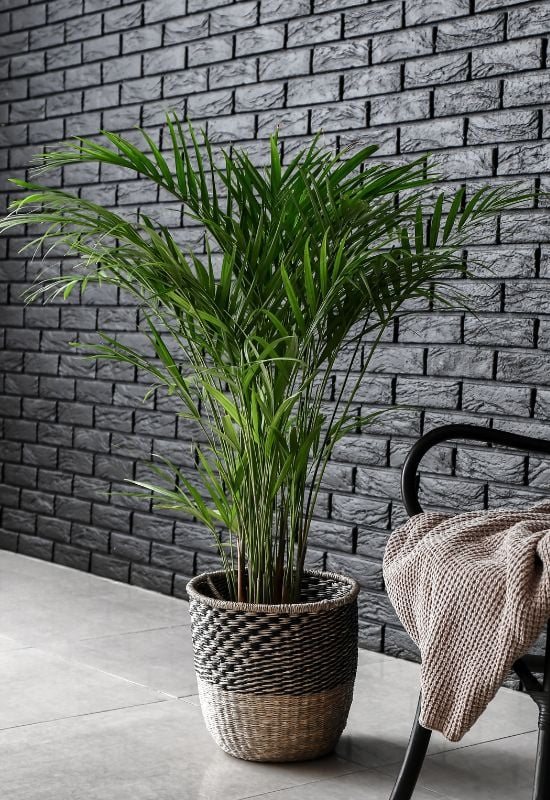
Not all palms love basking in the Sun, and yellow cane palm is one of them: it likes low light instead.
Also called areca or bamboo palm, it has lovely arching fronds that come from stems that look like bamboo, of a bright to mid green color and with golden reflexes.
Fresh looking and with a lovely, fine texture, the leaves are thinly segmented, keeping the overall appearance of this small tree very airy, bright but also elegant indeed.
Yellow cane palm has the “colonial look” of plantations; it would look great next to a wicker chair, and it brighten up rooms with its positive and exotic personality.
3: Australia Umbrella Tree (Schefflera Actinophylla)
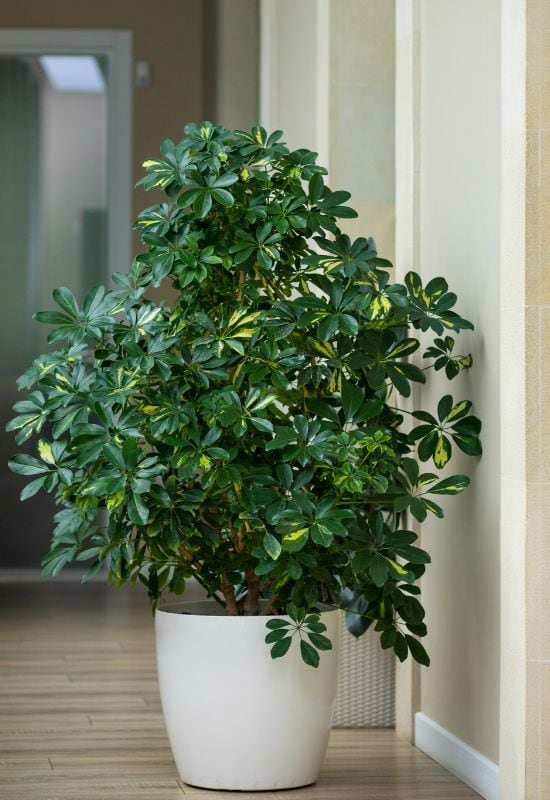
Exotic looking Australia umbrella tree is perfect for shade outdoors and ideal for moderate light places indoors.
The leaves are compound, palmate and with 7 to 16 segments that droop beautifully, like small parasols.
They are mid green, glossy and up to 2 feet across (60 cm) but smaller in closed spaces… Still…
The crown of this unusual multi trunked tree is round and it too ends up looking like an umbrella, just to keep everything consistent…
Outsides it can also bloom, with long red spike like racemes containing up to 1,000 flowers each, but this is far less common inside.
For a lush, tropical forest looking corner if your room or office, Australia umbrella tree is an elegant but also original choice – perfect to wow your guests!
4: Madagascar Dragon Tree (Dracaena marginata ‘Tricolor’)
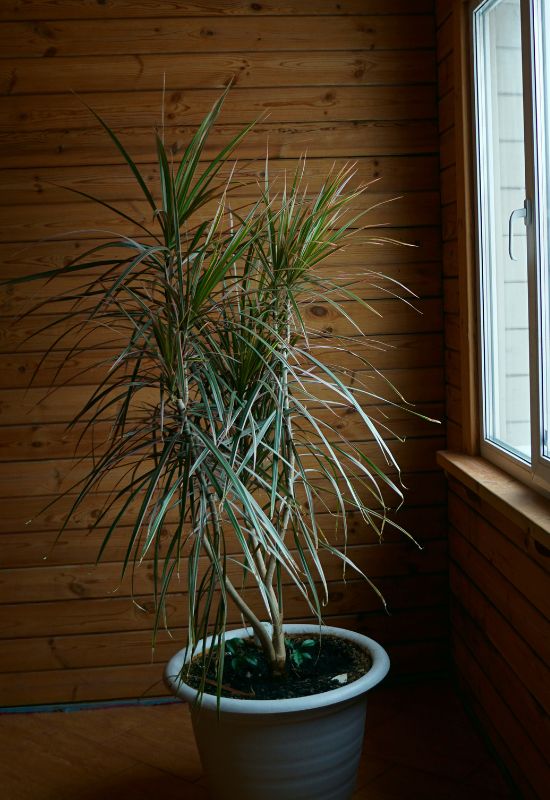
Brighten up that shady corner in your room or office with colorful Madagascar dragon tree, the ‘Tricolor’ cultivar of a classic houseplant!
The long, thin, succulent blade like leaves form a rosette of spherical shape, well balanced and sculptural.
But this variety also adds a twist: the foliage is variegated with shades of green, pink, purple and some bluish and cream touches as well!
The upright trunks hold this display at aye level, for you to enjoy it even more!It is both elegant and very showy, a different combination to achieve.
Madagascar dragon tree is low maintenance and sturdy as well; it will tolerate neglect, keeping its colorful foliage intact even if you forget to water it for some time…
5: Money Tree (Pachira aquatica)
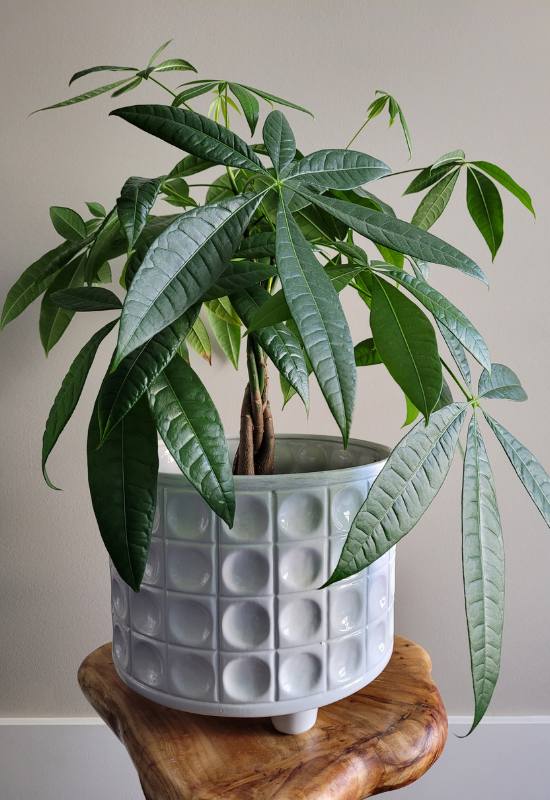
Money tree will bring you wealth and good luck even in low light conditions indoors! Often sold with braided trunks, the foliage in the crown is real beauty as well!
In fact, this popular houseplant has glossy bright to deep green leaves, divided into 5 to 9 elliptic or lance shaped leaflets, each reaching 5 to 10 inches long (12.5 to 25 cm)!
It is also a bloomer, with large, greenish to yellow white flowers, cream petals and a whopping 200 to 250 red stamens, each reaching 4 inches long (10 cm)!
Money tree is also easy to find in nurseries or even flower shops, even shady places, it lights them up with its bold, exotic but very elegant look.
6: Lady Palm (Rhapis Excelsa)
Sunny looking lady palm is a small tree that tolerates low light in indoor spaces. Winner of the Award of Garden Merit by the Royal Horticultural Society, this cycad native of China and Vietnam comes to your living room or office with its lush, fan shaped fronds, each made up 5 to 10 long, arching blade like leaflets, bright green and glossy.
These form a dense shrub like crown on top of bamboo like trunks, or canes, which cover with a coat of brown fibers with time. Small panicles of yellow flowers will also appear between the leaves in summer.
Evergreen and “ever fresh”, lady palm is a low maintenance small tree with a cheerful and exotic personality, perfect to light a spark in shady rooms.
7: Corn Plant (Dracaena frarans)
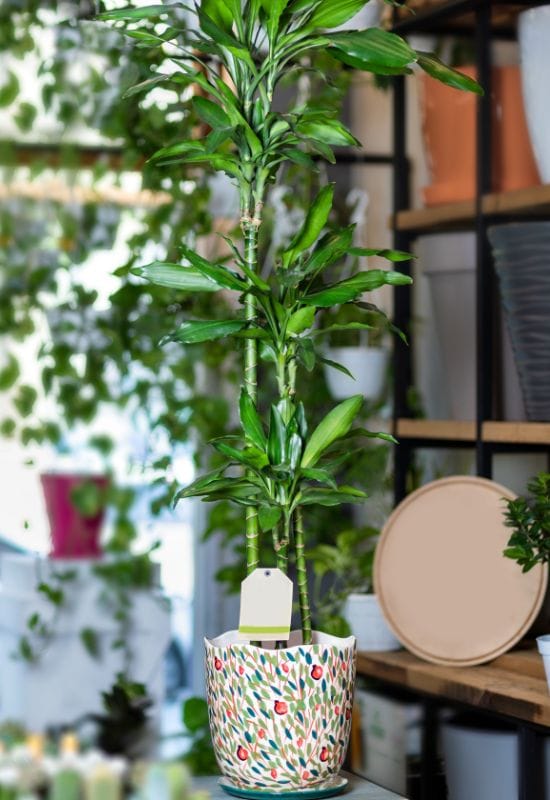
So called because it looks like the decorative version of corn canes, Dracaena fragrans will give you glossy foliage in shady rooms.
The rosette of long and broad, shiny green leaves reach up to 28 inches (70 cm) from the base to the pointed tips.
There are many variegated varieties too, with yellow or white stripes, others with different shades of green… It is actually a small succulent shrub, but with its upright trunk like stem, it looks like a small tree.
It is excellent to purify the air and it has also received the famous Award of Garden Merit by the Royal Horticultural Society!
Low maintenance and forgiving, corn plant is a super lush and exotic variety that will remind you of the shrubs and trees you’d expect in African rain forests, where it actually comes from.
8: Fiddle Leaf Fig (Ficus lyrata)
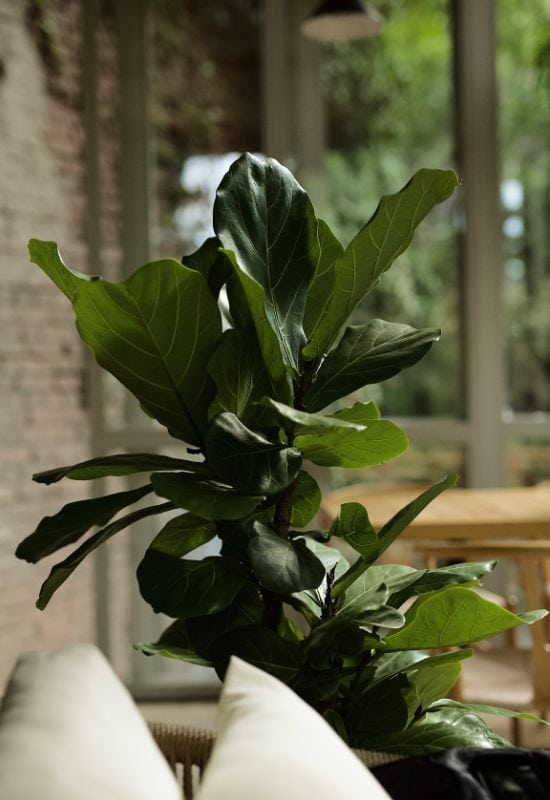
If you like unusual shapes and bold, sculptural trees, you will love fiddle leaf fig, and this houseplant too tolerates low light and shady rooms.
Reaching 18 inches long (45 cm) and about 12 inches in width (30 cm), the oddly shaped leaves of this western African species are really intriguing…
They are shaped like violins, in fact, a very sculptural touch indeed! Add the fact that they are super glossy and rich green on the emerald side, and you will surely understand why this houseplant is a real asset to any place that wants to perk up its originality and identity.
While it is exotic, fiddle leaf fig is an easy to grow and fairly forgiving plant. Surely an addition to a poorly lit room that no one can miss!
9: Banana Leaf Fig (Ficus maclellandi)
This Asian tree with a slender silhouette, banana leaf fig, or Alii fig, grows well in moderate light indoors. However, the lower the light, the less it grows, which could be a way to keep it small…
The trunk is upright and super thin, while the drooping leaves of the round crown are long and pointed, fairly leathery and glossy. However, when they sprout on the branches, they are red in color!
It has a very unique elegance, ideal for offices and tidy living spaces. It offers a fine texture which perfectly complements its lean and tall look.
Banana leaf fig is also easy to prune, which adds to its value as a houseplant. If it starts dropping its leaves, however, it means that you may need to move it, maybe closer to the window.
10: False Aralia (Schefflera elegantissima)
False aralia does not mind low light, and the scientific name of this tree from New Caledonia gives us a big clue: in fact, it means “very elegant”!
This may cone from its palmate leaves, with nodding leaflets that reach 9 to 12 inches long (23 to 30 cm), and they are very thin and regularly lobed.
Deep green and glossy, they give you an interesting, embroidery like texture, and at the same time they retain the lush and exotic look of the forests it comes from.
Sometimes, they can even take on dark purple and blue shades! The trunks are slender and upright, as are the branches, adding to its refined appearance.
This spectacular small tree is both light and airy and lush and tropical, a very difficult balance to get, especially if your room or office is poorly lit.

Written By
Emily O Bethke
Born in northern Wisconsin, Emily has always had a passion for plants. This passion has led her to work in greenhouses, landscaping, and academic plant research at multiple university’s. She graduated from the University of Wisconsin Milwaukee with a BS in conservation and environmental science. When she isn’t caring for her plants or writing you can find her traveling, cooking, at live music shows, and spending time in nature.

